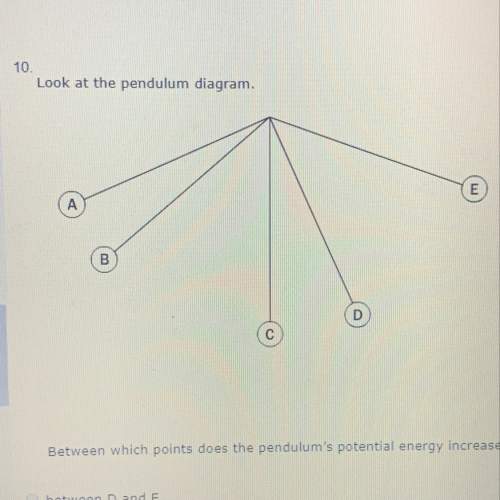
Physics, 08.02.2021 05:00 Shamiyah732
(d) The acceleration of a particle is a constant. At t = Os the velocity of the particle
is (10,20)m/s. At t = 4s the velocity is (0, 10)m/s.
(i) What is the particle's acceleration?
(ii) How do the position and velocity vary with time? Assume the particle is
initially at the origin.

Answers: 1


Another question on Physics

Physics, 22.06.2019 09:30
This is important. 1. which of the following is an si base unit for measuring length? (2 points) inch gram meter mole 2. which of the following units for distance is an si unit? (2 points) centimeter foot inch yard 3. which of the following tools should a scientist use to measure an object in meters? (2 points) electronic balance pan balance tape measure thermometer
Answers: 2

Physics, 22.06.2019 10:30
Carbon is allowed to diffuse through a steel plate 15 mm thick. the concentrations of carbon at the two faces are 0.65 and 0.30 kg c/m^3 fe, which are maintained constant. if the preexponential and activation energy are 6.2 x 10-7 m2 /s and 80,000 j/mol, respectively, compute the temperature at which the diffusion flux is 1.43 x 10^-9 kg/m^2 -s.
Answers: 3

Physics, 22.06.2019 17:00
Abowling ball rolling down the lane toward the pins has gravitational potential energy. a. no b. a lot of c. a little
Answers: 2

Physics, 22.06.2019 21:00
Aflask with vinegar in it has a mass of 160 grams. a balloon with baking soda in it has a mass of 40 grams. the balloon is attached to the flask to seal the opening and the vinegar and baking soda mixes. the balloon inflates to a large volume. what will the total mass of the balloon and flask be after the balloon inflates? explain. a) less than 200 grams because the solid baking soda disappears. b) 200 grams, because all the atoms remain in the balloon or flask. c) more than 200 grams because the size of the balloon is so much larger. d) less than 200 grams because gases such as the one in the balloon are lighter than solids and liquids.
Answers: 1
You know the right answer?
(d) The acceleration of a particle is a constant. At t = Os the velocity of the particle
is (10,20)...
Questions


Mathematics, 22.08.2020 19:01

Mathematics, 22.08.2020 19:01




Computers and Technology, 22.08.2020 19:01




History, 22.08.2020 19:01






History, 22.08.2020 19:01


English, 22.08.2020 19:01

Mathematics, 22.08.2020 19:01




